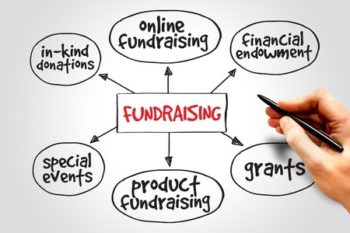The Duty of Area Interaction in Nonprofit Fundraising: Structure Lasting Relationships for Sustainable Assistance
Neighborhood engagement is progressively identified as a vital part of effective not-for-profit fundraising. By cultivating real connections with regional stakeholders, companies can cultivate trust fund and commitment, which are essential for sustainable support. Nevertheless, the approaches and approaches employed to engage communities vary widely, elevating essential concerns about efficiency and influence. What are the most effective techniques for growing these important connections, and exactly how can nonprofits measure their success in this sector? Comprehending these characteristics might substantially affect the future of fundraising initiatives and the general mission of nonprofit organizations.
Understanding Area Interaction
Community interaction is an essential part of successful nonprofit fundraising efforts. Nonprofits should recognize crucial stakeholders-- such as neighborhood members, neighborhood companies, and other companies-- to develop reliable interaction strategies.
Effective area interaction is predicated on active listening and responsiveness to the requirements and passions of the community. This procedure involves obtaining feedback, recognizing area characteristics, and making sure that the company's objective straightens with regional top priorities. Engaging the community can take numerous types, consisting of public meetings, volunteer possibilities, and collaboration initiatives, each designed to urge involvement and investment in the organization's goals.
Additionally, neighborhood interaction should be come close to as an ongoing discussion as opposed to an one-time initiative. By cultivating a comprehensive environment where area voices are heard and valued, nonprofits can develop a strong structure for future fundraising ventures. Eventually, a deep understanding of neighborhood engagement encourages organizations to produce authentic links that enhance their overall effectiveness and sustainability.
Advantages of Strong Relationships
Solid connections created with community engagement return many benefits for nonprofit fundraising initiatives. Firstly, these partnerships foster count on and trustworthiness, necessary components in motivating donors to contribute. When possible supporters see a nonprofit proactively associated with their area, they are more most likely to believe in its objective and influence.

Moreover, these partnerships facilitate efficient interaction. Nonprofits can utilize their links to share stories of effect, updates, and needs, guaranteeing that fans remain enlightened and involved. This open line of interaction not only reinforces bonds yet additionally encourages word-of-mouth promo, increasing the not-for-profit's reach.
Finally, solid community ties can draw in brand-new companions and enrollers. People and organizations are a lot more inclined to line up with companies that show meaningful area participation, providing extra resources and assistance that can dramatically improve fundraising capacities. Thus, cultivating robust connections with community interaction is indispensable to a not-for-profit's lasting fundraising success.
Strategies for Reliable Interaction
Exactly how can nonprofits successfully involve their neighborhoods to improve fundraising efforts? Creating targeted approaches is necessary for fostering purposeful connections. First, leveraging social media systems enables companies to share their objective dynamically and interactively, getting to a wider target market. Regular updates, involving material, and calls-to-action can galvanize area rate of interest and engagement.
2nd, organizing community occasions, such as workshops, volunteer opportunities, or fundraising drives, facilitates face-to-face interaction, permitting nonprofits to display their influence and efforts. These events not just raise funds but additionally cultivate connections and permit community participants to involve straight with the cause.
Third, executing personalized communication strategies can enhance involvement. Customizing messages to specific donor sections based on rate of interests and previous payments fosters a sense of belonging and investment in the organization's objective.
Last but not least, developing collaborations with neighborhood businesses and neighborhood leaders can intensify outreach initiatives. Joint initiatives can improve exposure and credibility, showing a cumulative commitment to the community's well-being. By integrating these strategies, nonprofits can build enduring connections that improve fundraising initiatives and drive lasting support.
Measuring Engagement Success
While engaging the neighborhood is important for effective not-for-profit fundraising, gauging the performance of these interaction efforts is equally crucial. Establishing clear metrics allows companies to examine just how well they are linking with their audience and attaining their fundraising objectives. Trick performance indicators (KPIs) such as benefactor retention rates, volunteer engagement degrees, and engagement on social media platforms provide substantial data for analysis.

Consistently evaluating these metrics allows organizations to pivot their strategies when essential, making certain check it out that community involvement stays aligned with their total mission. Furthermore, sharing these results with stakeholders fosters openness and constructs trust, encouraging more community involvement. find Inevitably, a robust dimension framework not only notifies future fundraising efforts but likewise enhances the partnership between the not-for-profit and its fans, preparing for sustainable success.
Instance Studies in Area Influence
Various study show the extensive influence that area engagement can have on nonprofit fundraising success. One noteworthy instance is the "Food for Thought" effort, where a local food financial institution partnered with organizations and institutions to host community dinners. These occasions not just elevated funds however also promoted a feeling of belonging amongst participants, significantly enhancing contributor retention prices.
Another engaging situation is the "Environment-friendly Spaces Project," which involved regional homeowners in the revitalization of urban parks. This initiative not only gathered financial backing from local companies but likewise grew a volunteer base that added to recurring maintenance and programming. The sense of ownership and pride among neighborhood participants translated into sustained contributions.
In the realm of arts, the "Art for All" campaign successfully involved neighborhood artists and clients to create collective art installments, bring about boosted visibility and donations for a regional arts nonprofit.
These instances highlight that when nonprofits prioritize community involvement, they can create long lasting partnerships that improve fundraising efforts, guaranteeing sustainable support and fostering a dynamic community society. Such instances show that area interaction is not merely a strategy but a crucial pillar of not-for-profit success.
Verdict
Finally, neighborhood engagement is integral to the success of not-for-profit fundraising initiatives. By promoting solid connections with neighborhood stakeholders, companies read this post here boost count on and trustworthiness, resulting in enhanced contributor retention and commitment. Carrying out reliable interaction techniques and gauging their effect ensures that nonprofits can adapt and thrive. Eventually, a robust structure of community assistance not just enhances fundraising potential however additionally cultivates a society of partnership, important for attaining long-term business goals and maintaining purposeful impact.
Nonprofits need to recognize key stakeholders-- such as community members, local businesses, and various other organizations-- to develop reliable engagement techniques.

In verdict, neighborhood interaction is indispensable to the success of not-for-profit fundraising efforts.